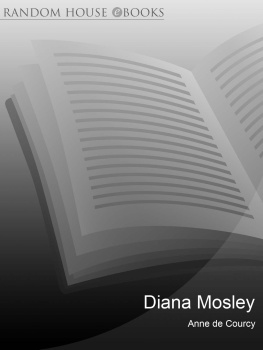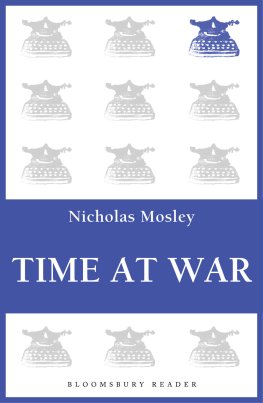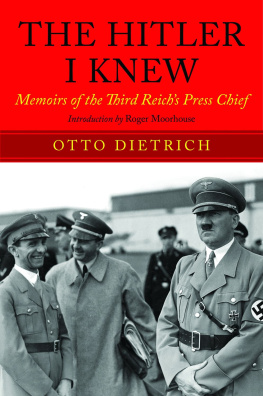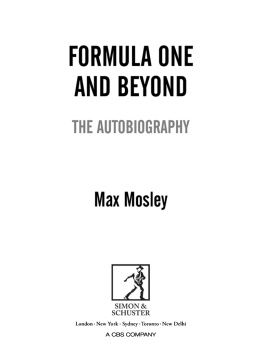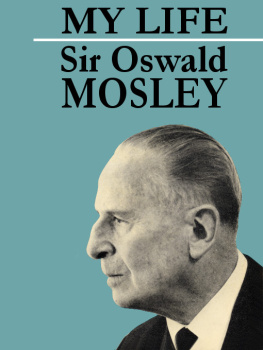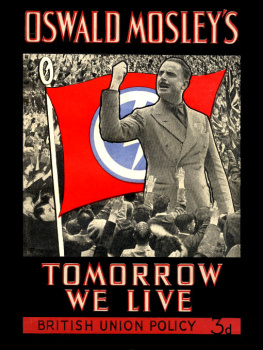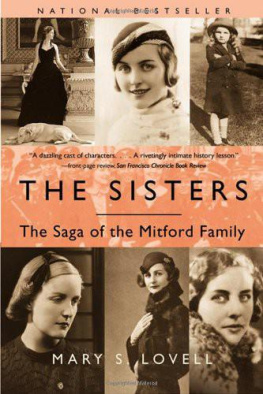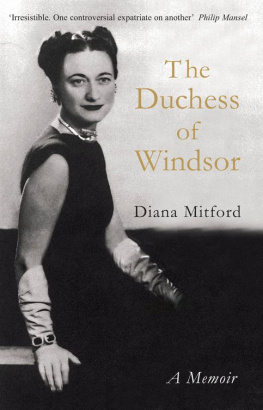Diana Mosley
Anne de Courcy

Contents
Authors Notes on Sources
The vast bulk of my information about Diana Mosleys life came directly from her, in hundreds of taped interviews, taken when I saw her or stayed with her in France.
More came from her sisters Pamela Jackson, the Duchess of Devonshire and Jessica Mitford and Dianas sons, stepdaughter and stepsons.
There is valuable background information in Jonathan Guinnesss The House of Mitford, as in other books written by and about the Mitfords, such as Dianas own autobiography A Life of Contrasts. (See Select Bibliography.) Several people whom I interviewed were illuminating about the Mitford and Mosley families.
Diana Mosley generously gave me access to her private papers, letters and diaries.
Chapter One
Interviews with Diana Mosley, Jessica Mitford, the Duchess of Devonshire and Pamela Jackson; Derek Hill; Viola Erskine. Water Beetle by Nancy Mitford. Life of Contrasts. Interviews with James Lees-Milne.
Chapter Two
Diana told me about her time in Paris. She documented many of her adventures there in letters to James Lees-Milne, held at Yale University. Pam described Swinbrook very fully, including the bread handed out after matins at Swinbrook church. Details about the Redesdale pews can be found in the church. Diana described her feelings for Randolph Churchill in a letter to Robert Skidelsky. Information about Dianas dance is in correspondence from Sydney. A letter from Diana Churchill talks about the Prof.
Chapter Three
Bryans feelings for Diana are made very plain in his letters to her and his own memoir, Dairy not kept, is a useful source. Jonathan Guinness gave me a vivid description of his father. Lord Longford, who was Captain of Bryan Guinnesss house at Eton, then a contemporary at Oxford and later in the House of Lords, also provided me with much material. Frances Partridge talked to me about Bryan, and Lady Longford paid tribute to his skill as a waltzer. Bryan included much family information in his long letters to Diana.
Interviews with Diana, Pam, Jessica; Dianas great friend Lady Celia McKenna (Cela Keppel); Lady Longford and Lord Longford. Bryan Guinness includes the story of the girl he would not kiss in Dairy not Kept. Bryan Guinnesss sonnet Sunrise in Belgrave Square is included in his book Potpourri from the Thirties. The sonnet was written in 1932 and appeared in its earlier form in Under the Eyelid (Heinemann), then recast before appearing in the Collected Poems, 192755 (Heinemann). Bryan described events and his feelings after kissing Diana and after her acceptance of his proposal in letters written immediately afterwards.
Chapter Four
Life with the Malcolms of Portalloch is amply described in The Prince and the Lily. Much of the story of the courtship of Bryan and Diana is told in the passionate and adoring letters he wrote to her at the time. He wrote her a long description of his interview with her father. The passage from Bryan Guinnesss diary appears in his book Dairy Not Kept. I also drew on interviews with Diana herself.
Chapter Five
The story of the Pocket Adonis is from Dairy Not Kept. The Tropical Party is described in the 24 July 1929 issue of the Bystander. Lady Celia McKenna, who spent much of her time with Diana and Bryan after the death of her mother, gave me a very full description of the life at Buckingham Street, as did Diana in conversations with me. Diana described early married life and how Bryans father settled on the Bar for him. There is more about Diana and Bryans life together in Potpourri from the Thirties. Letters written to Diana by her friends fill in many details of this picture.
Chapter Six
The parties are described, thinly disguised, in Vile Bodies. The Bruno Hat exhibition is mentioned in many volumes of the time; there is a good description of it in M-J. Lancasters biography of Brian Howard. Diana also told me about it. The Duchess of Devonshire described Biddesden; there is another description of it in Potpourri from the Thirties. Elizabeth Lady Moyne told me much about its history. Diana told me how she had furnished it; she and her sister Pam Jackson told me about its haunting. My father-in-law, General Sir Clement Armitage, knew the then Major Clark, who told him of his experiences. Derek Hill described the rich cerulean blue invented by Diana for the buildings at Biddesden. Frances Partridge gave me her impressions of Lytton Strachey, the Strachey voice (at one time the whole of Cambridge caught it), Dianas effect on Lytton and Carrington, and how they would visit Biddesden for walks, picnics or riding. She also fully described Dianas visit to Ham Spray, at which she was present. The Daily Express of 2 April 1930 describes the April Fool played by Evelyn Waugh on Diana, and the godparents at the christening of her son Jonathan. Lyttons letter about staying at Knockmaroon is quoted in Michael Holroyds biography of him. James Lees-Milne told me what it was like staying at Biddesden. Diana described the arrival of Desmond in a letter to Lytton Strachey (in the British Library). The verses from the poem Loves Isolation are taken from Potpourri from the Thirties. The poem is also in On a Ledge (Lilliput Press). Earlier versions appeared in the Collected Poems and in Twenty-Three Poems (Duckworth).
Chapter Seven
Frances Partridges memories, related to me, contributed to the story of Carringtons death, well charted in various biographies. Carringtons letters are in the British Library; her feelings after Lyttons death are recorded in her Commonplace Book. Diana told me in detail about Bryans loaning of his gun, and his feelings when he learned of Carringtons death.
Chapter Eight
Many people, including his son Micky, told me about the physical and emotional impression made by Mosley one of the most vivid these descriptions was by the painter Derek Hill, another was from James Lees-Milne, whose uncle had married Mosleys youngest aunt, and who canvassed for him during the 1931 general election. The Past Masters gives a good description of Mosleys resignation over the Mosley Memorandum. Tom Joness Whitehall Diary contains details of the Mosley Memorandum.
Chapter Nine
Harold Nicolsons diaries, both published and unpublished, talk of the New Party in great detail and charts the swing to fascism, as well as Nicolsons initial enthusiasm for Mosley and the New Party and his gradual disillusionment with both. Irene Ravensdales diaries describe Cliveden weekends. Lord Longford told me about Mosley at Cliveden and the effect of his certainty at a time when no one knew what to do about the state the country was in. Issues of Action show how the New Party gradually swung towards fascism. Georgia Sitwells diary talks about Mosley and his beliefs. Robert Boothbys autobiography, I Fight to Live, is illuminating about his great friend Tom Mosley, as is Colin Crosss The Fascists in Britain; so were interviews with Nicholas Mosley, and the book he wrote about his father. The resignation statements of John Strachey and Bill Allen were widely quoted in contemporary newspapers in July 1931. Mosleys account of his first sight of Diana is in his book, My Life.
Chapter Ten
Frank Cakebread kindly lent me his privately printed

